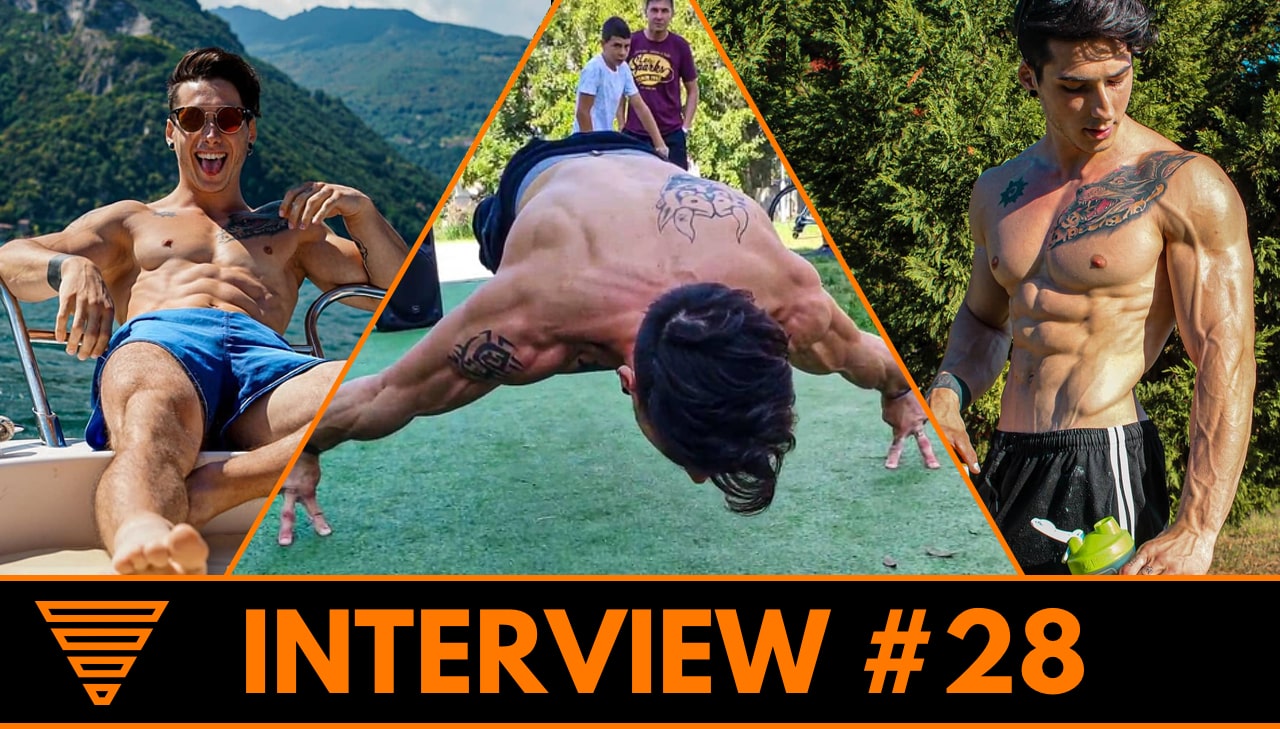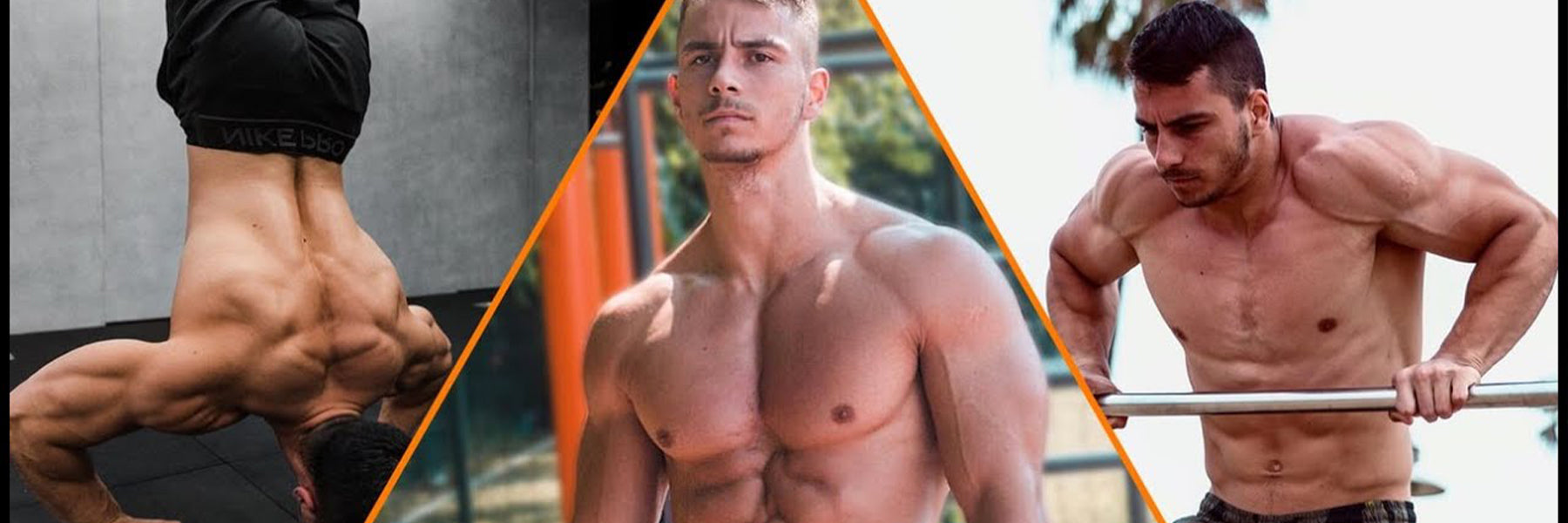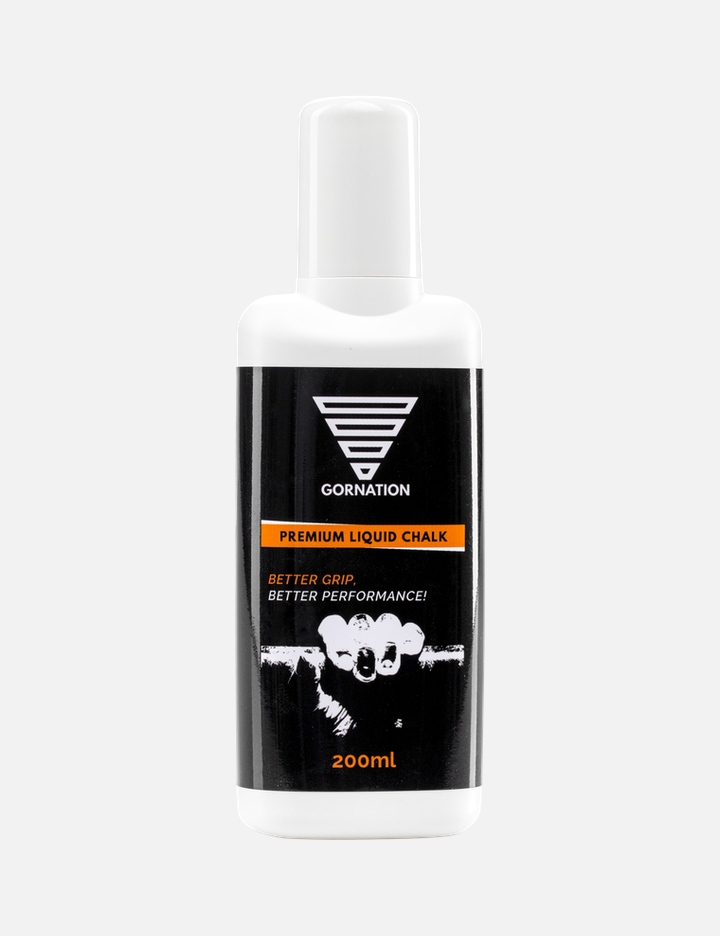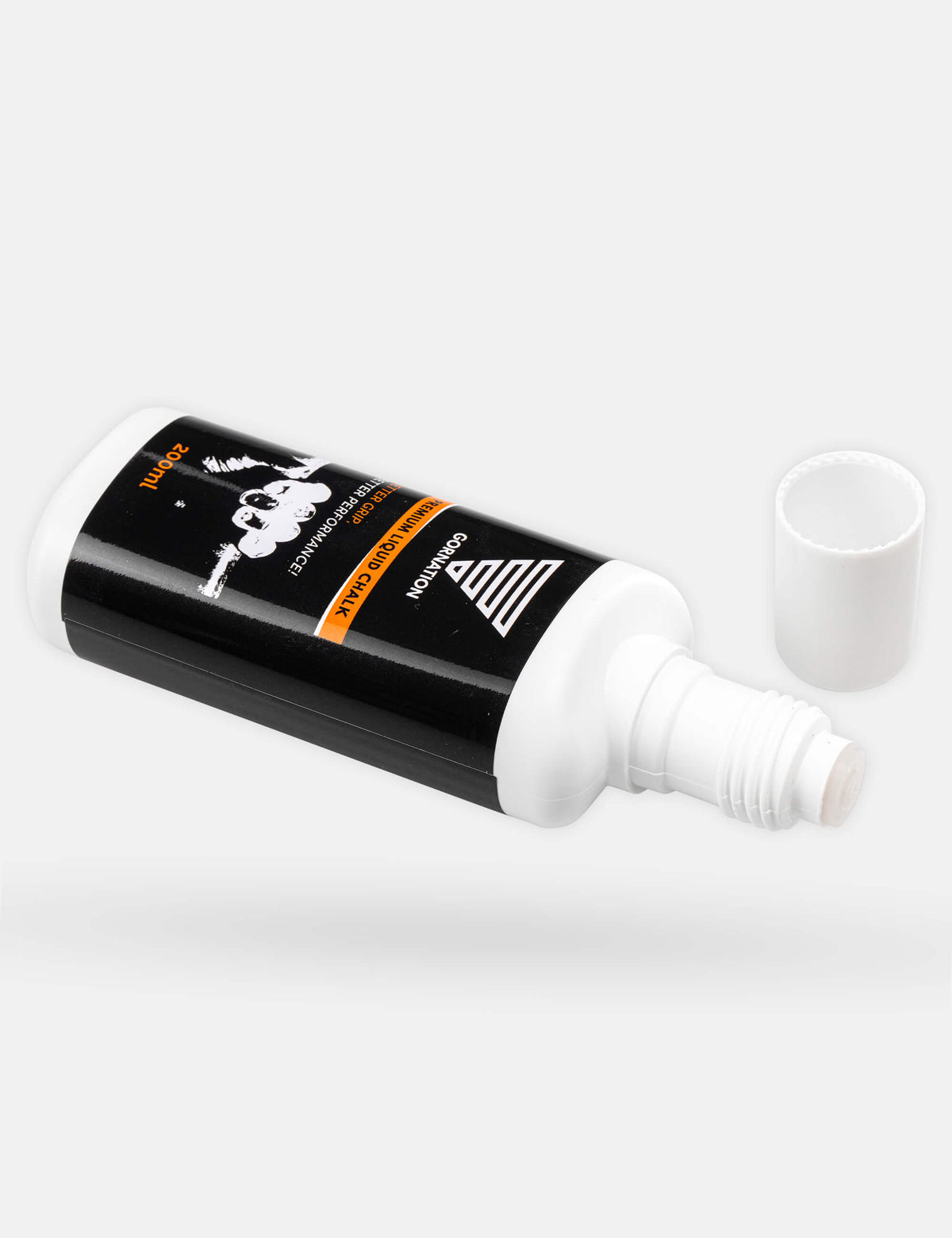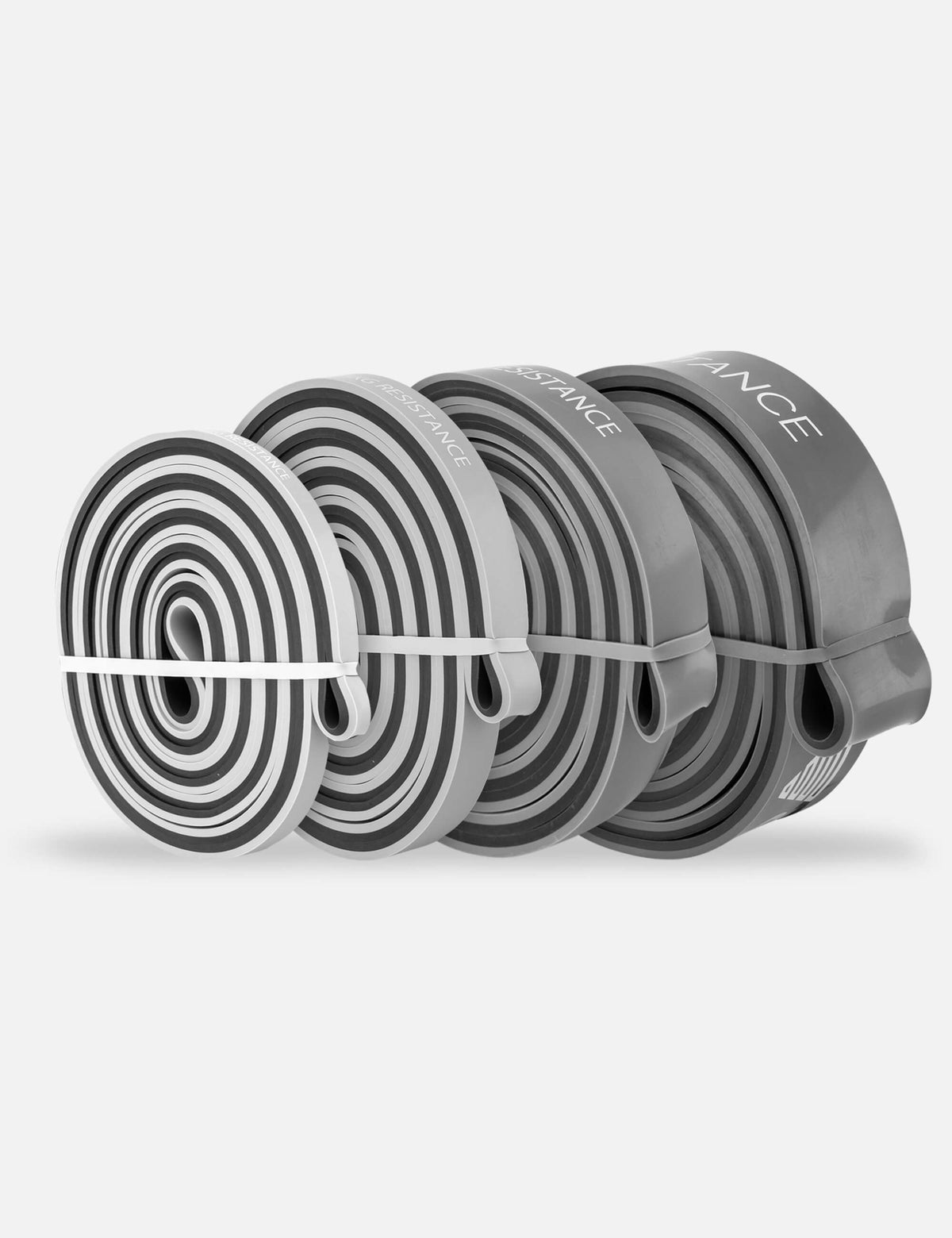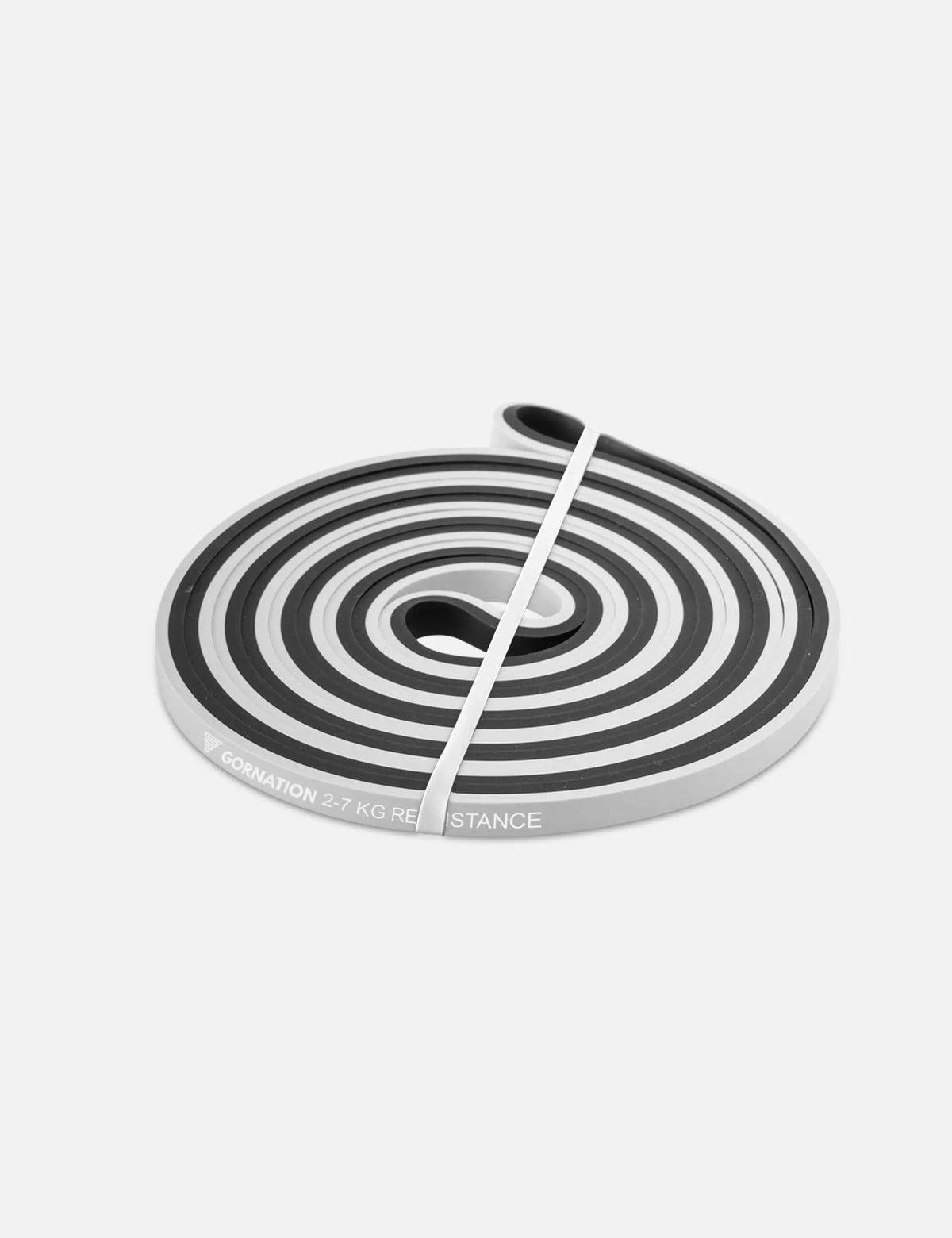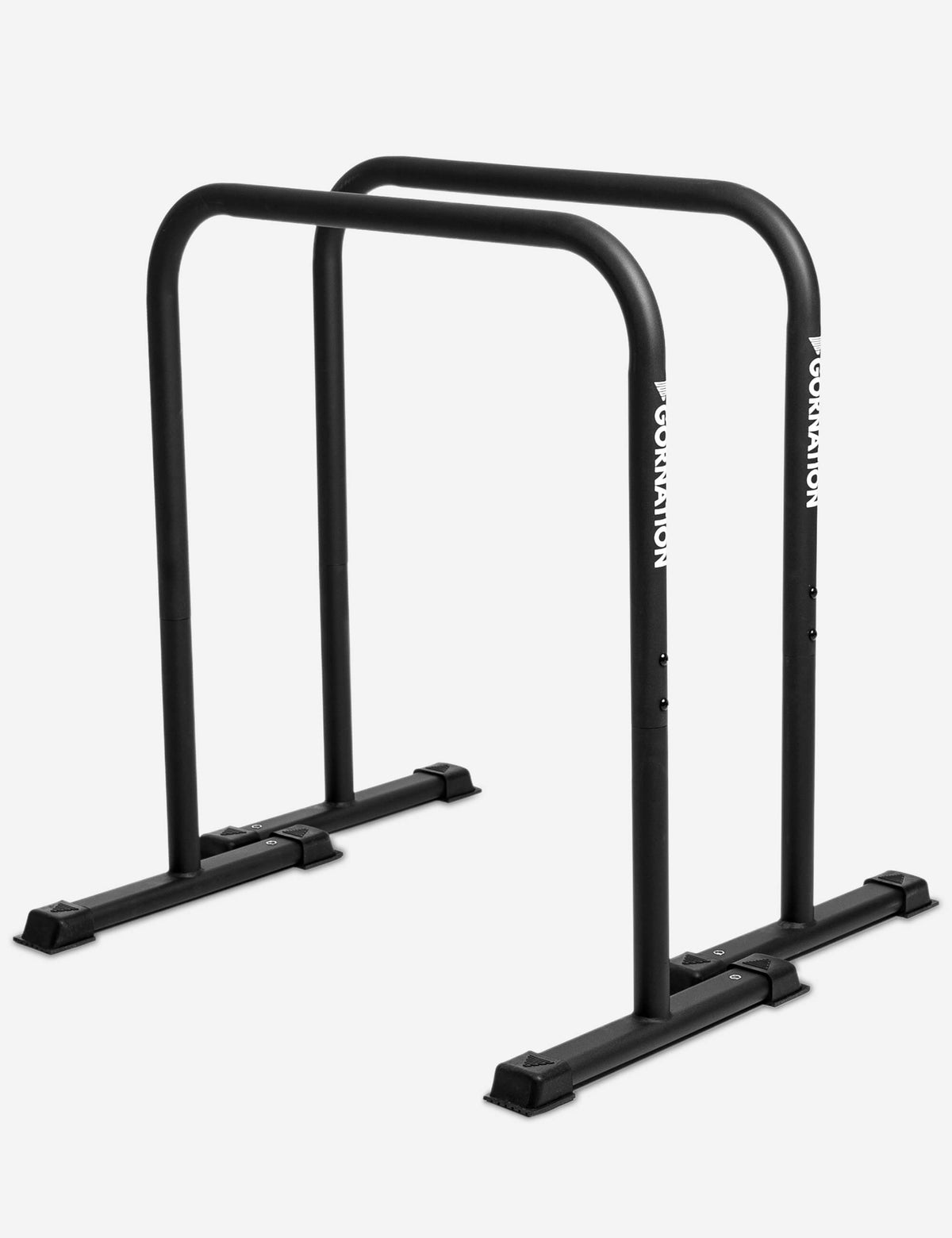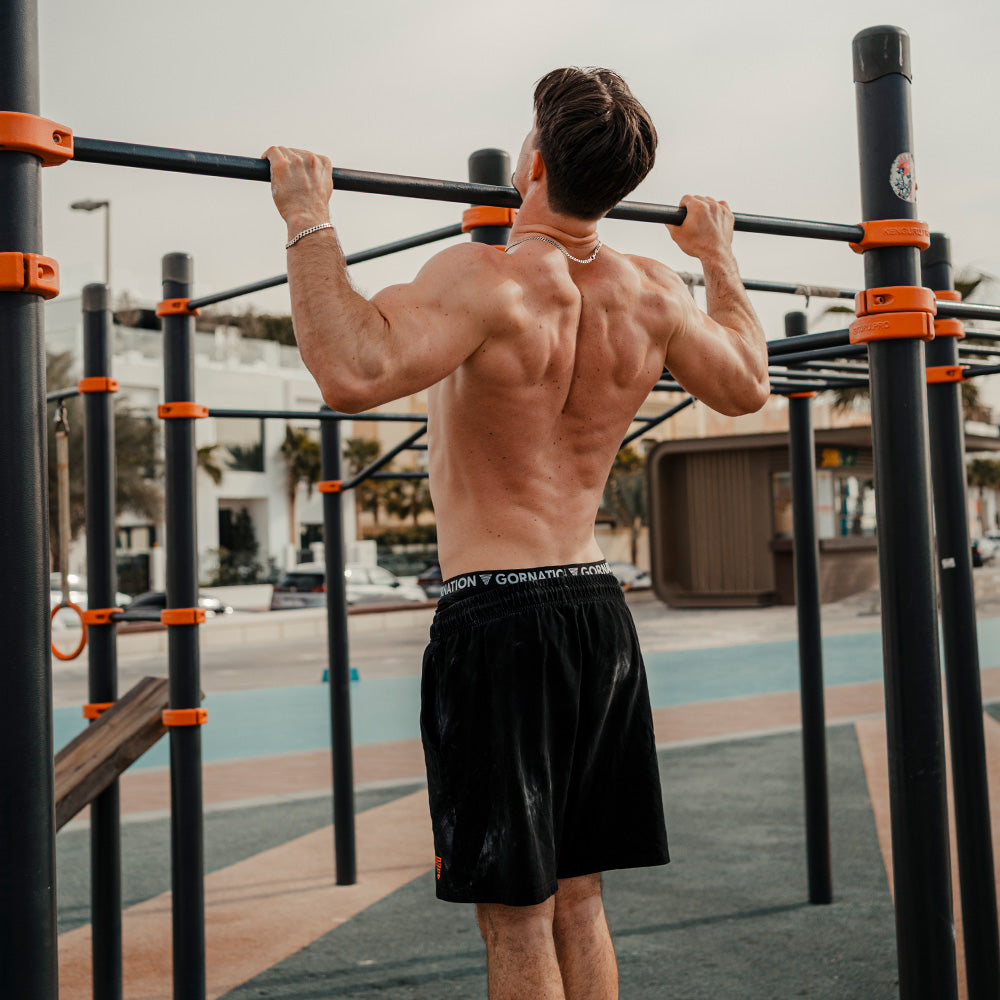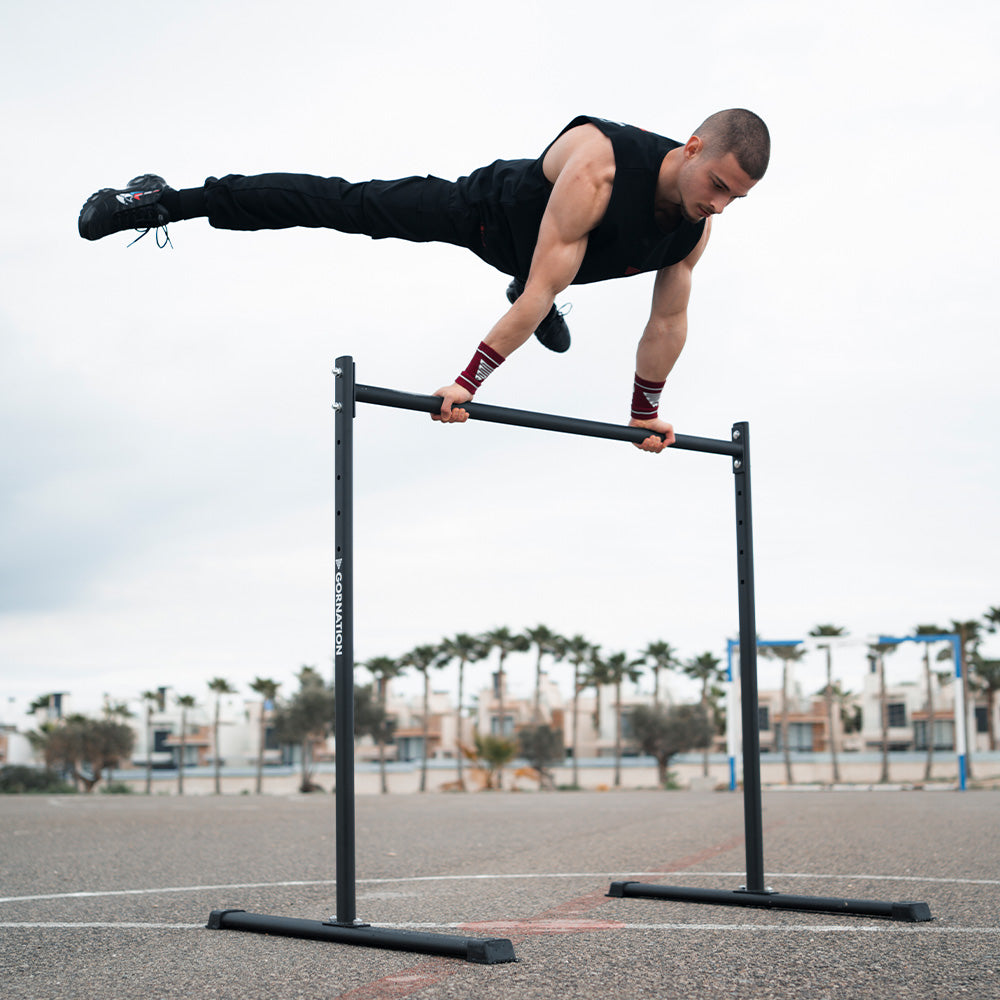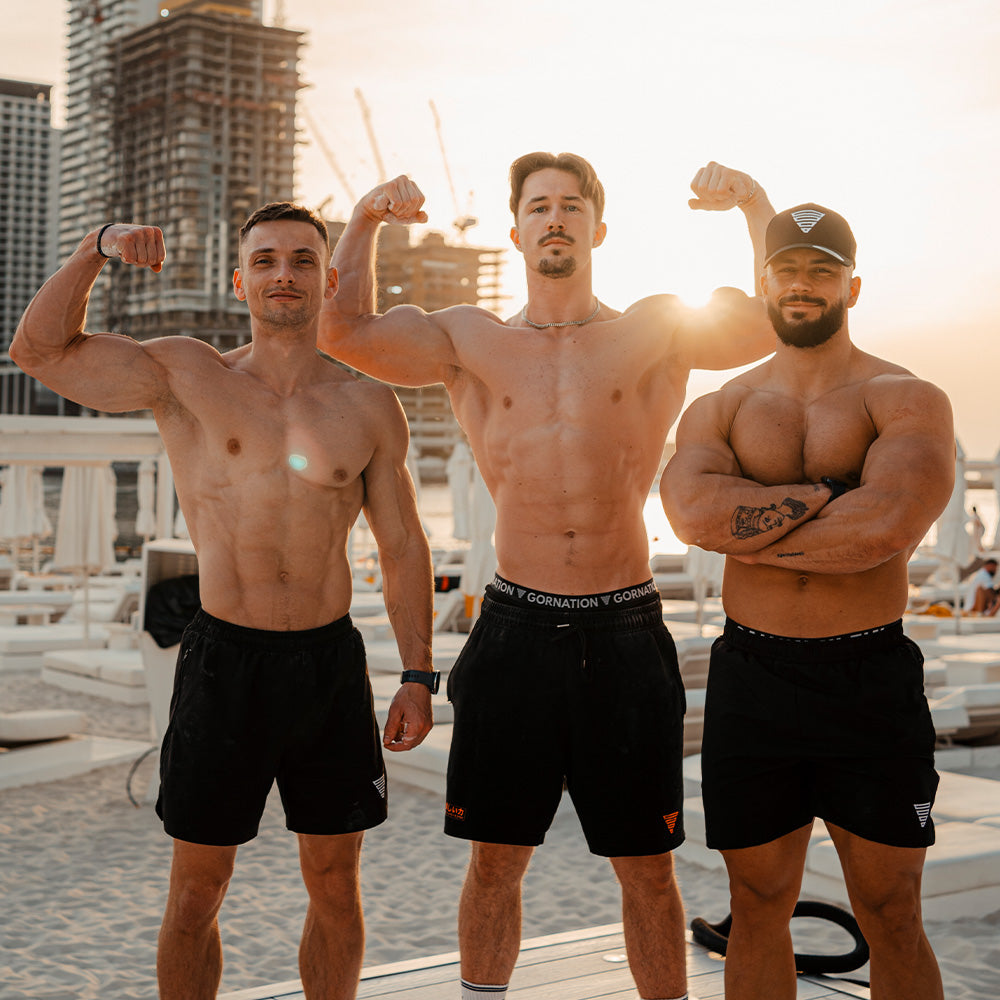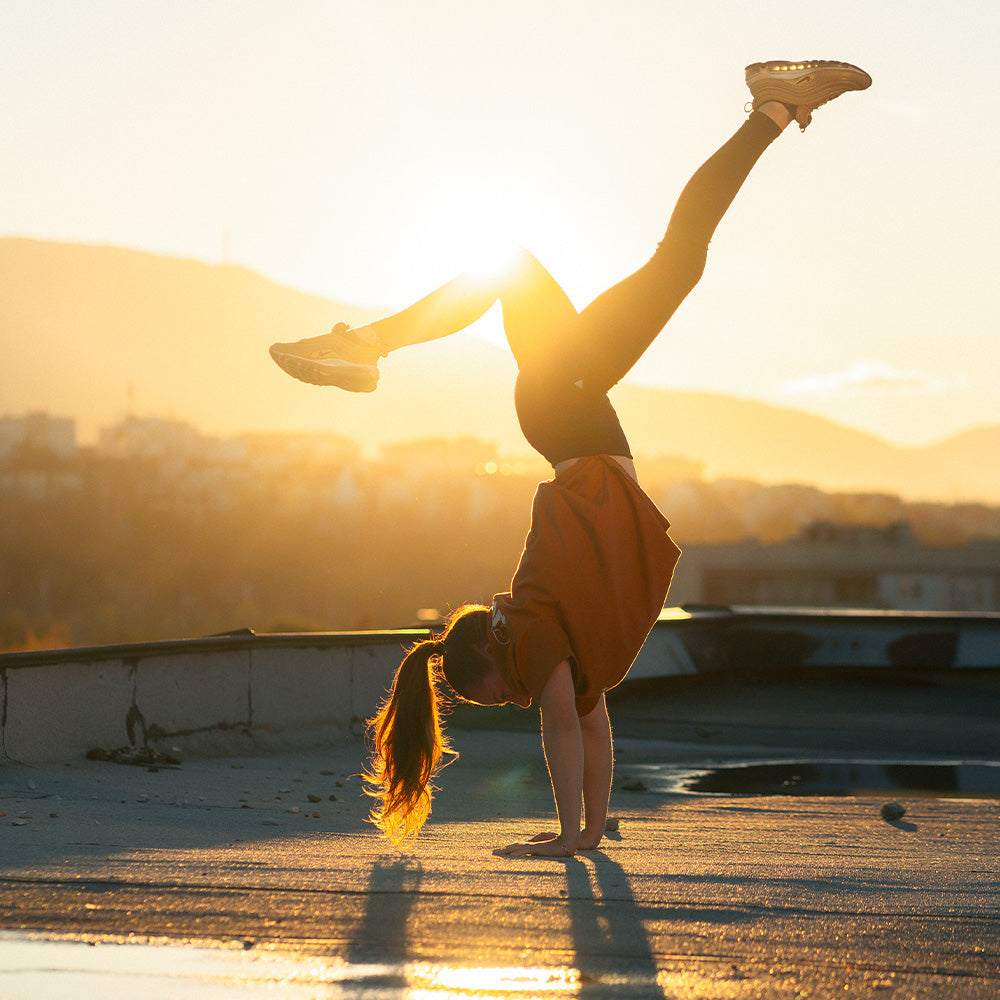SIMON "SIMONSTER" ATA | Advice on Workout & Injuries | Interview | The Athlete Insider Podcast #36
View the interview here:
Get 10% off with the code GORNATION10 on all his training programs:
https://simonsterstrength.com/
https://www.joinfitapp.com/project-calisthenics/
Or listen to the interview here:
The text of the interview (translated automatically):
i've always had a lot of drive with this sort of thing it's always been something that i've very much enjoyed so i've put in a lot of hard work but it has never felt like or generally it hasn't felt like hard work it's just been a hobby it's been something that i've wanted to do and starting that quite young it became a habit and it's just something that i did consistently for a long period of time and i think that's really the key to success yo gorillas welcome to the athlete insider podcast by gornation my name is phil and today's guest is somebody who is well known in the calisthenics scene somebody who inspires hundreds of thousands even millions on the internet with his superhuman power with his superhuman skills i'm really happy to welcome you from australia simon atta thanks yes we finally made it we made the interview possible that so many people were requesting i'm really happy to welcome you to the show and to kick off simon how do you present yourself um i'm simon also known as simonster i'm a physiotherapist and a calisthenics professional so i've been doing calisthenics or some form of body weight training for about 20 years i have a bit of a diverse background and now mostly what i do is teach calisthenics and and coach calisthenics great and you're one of the the well-known people who made it uh who made it to uh to make calisthenics uh their their profession and uh who is able to to live uh the sport let's say it and i'm really looking forward to get to know you better your life your training advice etc and yeah um tell us more about your story you're combining gymnastics you're combining breakdance you have a as you said an interesting background tell us more about it yeah so i started um when i was quite young my parents got me into gymnastics i never did that for a very long time i did that for probably about a year when i was about 10 years old and a friend of mine who i went to school with who also did gymnastics was taking break dancing classes and he said you should come and try break dancing and i thought what's that dancing and he was like just come it's it's really cool it's like spinning on your head and all that all that kind of stuff so i went along i really enjoyed it and thereafter i stopped gymnastics and switched just to break dancing but in gymnastics there's always a strength and conditioning component um or generally strength and conditioning is a big component of gymnasts training so while i was training gymnastics we trained some technique and then at some point in the class there'd usually be about 30 minutes or an hour of body weight strength and conditioning or what what we now call calisthenics and as i was as i was trying to to learn some power moves things like flares and air flares and combine different moves i always thought if i was a little bit stronger i could probably do this if i if i just had the strength i could probably get away with some technical areas and it would help me you know learn the move and perfect the move so i started taking some of the bodyweight strength training or the capel aesthetics that i've learned in gymnastics and applying that to my breakdancing so it's always been a staple form of a form of training that i've kept along the way um and then with breakdancing there's a lot of freedom i always liked the the spectacular moves and the things that looked impossible so the flips the tricks the hard balance moves so that's where the the flipping comes in and the power moves and combining a few different aspects okay and uh definitely makes sense when i uh scroll to you on your youtube channel to the bottom uh it's like nine years ago uh you already makes made some i'm not into breakdance but some air flares i think that's called and like spinning really really fast and on your hands um and like you said 20 years of experience uh 20 years of sports now yes i'm 30 now and um started with gymnastics when i was about 10 and switched to breakdancing at about 11. so wow okay so i bet you can teach and share some stuff from your experience to the young generation because i bet there are quite a few listeners who are like in calisthenics for two years for one year even and somebody with 20 years is i think you can share a lot about injury prevention and stuff like that later on um like what are the benefits yeah like you you start with breakdowns you also took a few things with from gymnastics i guess uh what are the benefits that uh these sports brought to your calisthenics career let's call it yes um so i'm a bit unique when you look at me with compared with other calisthenics athletes um i think because i have such a diverse background and what's what that's given me is the freedom to express myself a little bit more um diversely with my with my performances so you know it's not just statics it's it's not just dynamics it's not just hand balancing it's not just flips it's kind of meshing these all together and i really like that because it allows a lot of artistic expression in calisthenics you can join air flares into planche into hollow backs into hand hops into whatever kind of move you want so that's that's what i've um that's what i really enjoy about having the diverse background that i do makes sense and did you ever think about competing in a profe in a professional uh like competition so i used to compete with break dancing but once i started focusing more and more with kel on calisthenics i never really com competing was never really something that i i wanted to do i've always been very interested in anatomy and the the kind of academic and sports science side of training and i really enjoy teaching so that's kind of where my focus has been as i've as i've switched over to doing more calisthenics as i've gotten older makes sense people always ask this how uh heavy and how tall are you it's i'm 179 centimeters wow for people in the usa that's about five ten and a half um between five ten and five eleven um and i'm about 77 kilos i think some i tend to be between about 76 and 80 kilos wow okay i didn't expect that i i thought you were smaller because uh like the performance that you do we all know that uh let's say five centimeters less would make it a lot easier for you and um it's a benefit that a lot of calisthenics athletes have like from the pros that they are a little smaller um but yeah that that makes it even more impressive that's uh that's good thanks yeah i hope that um that motivates some people because i found a lot of taller athletes especially um a lot of younger less experienced athletes when they're starting calisthenics um often here i'm tall am i ever going to be able to do this and there are some people taller than me who can do you know amazing whole planche a lot longer than i can hold front lever a lot longer than i can and it is a benefit to be smaller but you can't change your height all you can do is is train and increase um what you know increase your strength with the body that you're given so if you are for the taller athletes out there try not to be discouraged you can achieve a great deal of um proficiency with calisthenics and i think it's even more impressive seeing somebody who's six foot holding the front lever compared with somebody who's you know five five so yeah um i know that like we often receive messages or please interview a tall athlete and these are often people who are like above two meters um so i don't know the the the the american size but like really really the tall people um and they often laugh about uh when i say oh that's quite tall and like i'm also 178 centimeters so nearly as tall as you and they laugh about our size um because they are like two meters and 20 centimeters higher do you think it is it's possible to um get to your performances with the with this height i think if you're you know if you're two meters tall or you're six foot seven or you're you know you're the average height of somebody in the nba i think it's very unlikely that you'll be able to excel and be um you know one of the best calisthenics athletes but i still think you can achieve a lot more than what than what people would expect from you um you see a lot of people who are well above six foot holding a front lever um there are a few guys above six foot holding a planche i think if you if you train and you you obviously have to make a few more sacrifices and somebody's a little bit younger it will be more difficult for you to achieve that than if you had been you know five five but i think um a great deal can still be achieved with that it's very difficult to answer that because there's so much variation between people somebody's genetic ability um you know at six foot might be might be more than somebody else who is five eight or you know five seven um so it's yeah it's very difficult to say you know will i ever be able to achieve this the answer is i don't know um but why not give it a try sure and that's where the mindset i think pops in that um it's not my goal shouldn't be i want to be the next simon sir um but my goal should be the best version of myself you know and um exactly yeah but uh it's it's good that you say that um when i look from the outside of you out on you as an athlete and i follow i personally follow your videos since um uh what the first video that you did in this boxing ring i think um i i think it's like six years old or five years old something like that um i always ask my dad myself how is it possible to come to that kind of performance and um that's the question that i wanted to ask you what do you think is your secret your formula to success how did you get the the athlete that you are today is it genetics is it that you work harder than everybody else is it your scientific approach is it your background knowledge from physiotherapy what what is it that makes you uh succeed i honestly think it's a large combination of all those things and a lot of that has to do with luck as well um you know so starting off with with as we spoke about earlier with the background that i have it's quite a unique background and i think that gives me a lot of edge in the performances that i do and makes my type of performance quite unique um but then along the way i've i i've always had a lot of drive with this sort of thing it's always been something that i've very much enjoyed so i've put in a lot of hard work but it has never felt like or generally it hasn't felt like hard work it's just been a hobby it's been something that i've wanted to do and starting that quite young it became a habit and it's just something that i did consistently for a long period of time and i think that's the key to um i think that's really the key to success when you look at athletes who've achieved a great deal it's just consistent hard work over a really long period um with that i've i've had a lot of luck on my side with good training partners good teachers being able to travel good work life balance that have helped helped with that as well yeah it's true because there are so many variants um for example somebody who works in night shifts somebody uh like who has a lot of pressure on his body and not good work by life balance all these things influence the the performance right yeah and even even small things that i that i was very lucky to to have um for example i went to university very close to where i live my commute time was was quite short so that that gave me a lot of time for training so others had to commute you know 90 minutes each way i had a 10 minute bike ride to to um my university so that that's um you know it can seem like a a little very small thing but that amount of time really adds up when you when you look at that over the course of four or so years that's true and it brings responsibility to you as a person that you use this time right these 50 minutes that you spare every day that other people are sitting in the tram or whatever that you invest this time in training stretching preparing food whatever yeah one one thing i'll say for um for the younger athletes out there or the um less experienced athletes is often when you look at really high level people and you look at their training schedules it can seem crazy so when you look at these people who can do amazing things and they're training for four hours a day if you're if you're just starting and you're quite young and it's your first year of calisthenics it's very unlikely that you're going to be able to go from doing nothing to doing four hours a day and these habits take time to to build in the same way that strength and technique takes time to build so all these guys who are doing crazy things and training for hours and hours on end probably didn't start that way so it is okay to start small build a habit find a style of training that you enjoy and a habit that is sustainable and build from there yeah because the interview before you um is uh an interview with uh sergio di pascuale from italy and he is an endurance athlete and he like does crazy numbers in his workouts like uh 2000 dips 2000 squats like this this stuff you know and if i see this as a beginner and i want to progress fast i might have have the temptation to do the same reps numbers but i just take a little longer a lot longer let's say um but it's not good for the joints etc so um i think the healthy way is definitely what you said to build a habit yeah and even even if um there's two downsides to that one is that you might just get an overuse injury your body hasn't acclimated to this style of training you do too much too soon it can't recover from it and you get an injury and then you need to take you know three months off when you could have just slowed down a little bit that's one downside the other downside um that is less i feel like people don't talk about as much is just that you probably won't enjoy it if you go from if you go from doing nothing to trying 2 000 dips a day you're probably not going to have a lot of fun with that and you'll probably just think why am i doing this calisthenics sucks and there goes your um you know there goes your drive and you might just stop there whereas if you started with you know three sets of ten uh you know a few times a week and built from there you might really enjoy this style of training build a habit and you might be able to progress to the point where you can do two thousand dips in a day true how many hours do you put into training currently per week yeah it's it's um it's not very consistent it very much depends on what my schedule is like and if i'm traveling or if i'm teaching but generally i try to do a couple of hours most days of the week so maybe one to two hours four to five times a week okay and how do you put so many disciplines so many yeah let's call it skills in one schedule in one week let's call it yeah so so i i don't actually train um every skill in my skill set every week so a lot of the skills that i've learned um and i've mastered them to a level that i'm happy with um i usually just put them in the maintenance bin and i might come back to them once every you know month or so just to make sure that they're still crisp and i can still do them well if they're getting sloppy i might give them a little bit more attention but things like air flares or head spins for me now i could not do an airflow for six months and still still be able to do them quite well um so generally what i do is periodize my training and what that means is is generally manipulating what you do so you can pick for different things at different times so i might do blocks where i train a little bit more with breakdancing blocks where i train a little bit more with statics blocks where i train a little bit more with dynamics depending on what i'm trying to achieve at at that particular time but as a general rule i train skills before i train strength so things like hand balancing flips power moves or breakdancing moves they come first after that i'll train my my strength exercises generally for about an hour and then i might finish off with some mobility work okay and do you also train uh um reps on a consistent like the basics pull-ups uh dips etc yeah so so when i say strength um i i mean um all forms of strength static dynamics so that will include things like static planche holds static lever holds dynamic things like lever raises and you know planche negatives planche raises planche push-ups and then i do a lot of the basics so things like dips uh weighted chin-ups weighted pull-ups um those sorts of exercises okay and are you stronger and pull or and push generally definitely in push um so yeah with with the my background i've done basically exclusively pushing exercises most of my life um starting with breakdancing i was always doing handstand push-ups planche those sorts of exercises to help with breakdancing um there's no pulling in brake dancing you can't pull on the floor so um i exclusively worked on pushing exercises probably up until about three years ago when i started integrating more more pulling exercises okay interesting and um if i want to take a shortcut as a beginner or a as an intermediate or even as an advanced athlete you also offer your training programs and uh like uh you you offer the shortcut you offer knowledge etc to people like me um can you tell us more about it yes i have a few training programs and i'm always trying to develop more probably the the best known one is uh project calisthenics which is a general program that i've developed that has three levels beginner intermediate and advanced so beginner is for those of you who've done no training whatsoever who are working towards your first rep of dips or chin ups or can only do a few reps intermediate is to build capacity with those things so if you could do 10 chin ups 10 dips and you just want to improve your capacity and get an introduction into things like planche and lever and advanced is for the more advanced athletes who can hold a tuck flange hold a tuck lever or even hold a full planche or full lever and want to start improving their capacity and working towards more advanced skills like lever raises planche push-ups one arm chin-ups and those those sorts of skills so these are general programs that include pushing pulling as well as leg exercises i know legs isn't a big component of calisthenics but i've included it just to make it a comprehensive program and then alongside the general strengthening program which is there to build strength and build a foundation in a balanced manner there are tutorials for skills like the handstand handstand push-up plant lever where i give a technical breakdown of that particular skill which muscles are working what technical cues do you need to think about and what are the progressions to to get there so the reason i put this together is these kind of tutorials for these skills you can find them all over the place but it's very hard to find high quality tutorials for all of these things all in the same place that are curated so i've tried to do that to take the guesswork out of training where you can just say hey what position should my hands be in the planche okay click on the pledge tutorial yeah and it makes such a big difference in the head even uh just having a plan to follow and like a program and really numbers and professional advice then just as you said guessing or like searching it together from youtube videos it's definitely a good start to do that like this but if you really want to go deep in and want to take it serious uh it's it's uh definitely something that people can profit from like 20 years as you said uh yeah and um like we also prepared a little bonus for everybody who already sticked until here for the podcast so everybody every all the listeners are getting 10 off with the code coronation 10 on your website uh on the in the shop so everybody can check the the bio the the description with the link with the code etc and yeah profit from 10 off with the chord coordination 10. great so if you see like you're in touch with a lot of athletes i guess with your uh with you your role as a coach as an athlete as an influencer also uh what are the main three things that people if uh if they improved these three things in their workout they would get much better results what are the main problems that you see i think the main the main thing is consistency i think that's by far the most important thing training with consistency over a long period of time that's what you need to get to get good results you know that that famous saying rome wasn't built in a day neither was planche or front lever so um yeah understand that these skills take a lot of time progress won't won't happen every day especially the the more advanced you get progress tends to slow down um but you need to stick at it over a really long period of time another thing that i um that i often see which kind of relates to the same point is people chopping and changing their routines too frequently and this is especially true for beginners where there are so many skills to learn i want to learn one arm chin up planche front lever back lever handstand handstand push up one arm handstand human flag how do i do all of this at once and the truth is you can't really do all of this at once um if you try to include exercises for each of those skills in your program you do flag on monday you do bench press on wednesday you squat on a friday and do chin ups you're not getting repeated exposure to the same exercises which is very important to progressively overload and to make progress with them you need repeated exposure to the same stimulus to optimize results so what i encourage people to do is pick a program focus on a few skills at this at a time stick at that for a period of time you know at least six to eight weeks so that you can make progress when you plateau or when you get bored or when your goals change that's when you can switch up your your program to focus on other things one thing that um that might not be intuitive for beginners is that a lot of these skills help each other so a great example of this is if i really want to unlock the planche the handstand push-up and the the planche push-up the handstand push-up and the 90-degree push-up i can think oh there's three skills that i that i want to learn i need to include exercises from each of them but that's not really true if i improve my planche push-up i guarantee that my handstand push-up will improve as well if i improve my handstand push-up capacity my 90-degree push-up capacity should improve as well if you think of a planche and a back lever they're essentially the same move they use the exact same muscles the only difference is the shoulder angle in a planche your shoulders flexed about 30 degrees in a back lever your shoulders extended about 30 45 degrees so by improving your planche you will also get some transfer to your back lever so if you focus on planche for a period of six to eight weeks and then focus on your back lever for a period of six to eight weeks and improve your capacity with planche then improve your capacity with back lever you'll probably get a much better outcome than chopping and changing every week and not getting repeated exposure to the same thing so those are two points that make consistency over a long period of time consistency with your training program not chopping and changing exercises the final thing is to listen to your body and not train into pain the the saying no pain no gain is you know very motivating it's a very sexy saying but it can do a lot of harm i think the intention with that saying is really good but without effort there's no gain so you need to be challenging yourself to to make adaptations and to change yourself and that's true but your training should never be painful in the sense that something is hurting and you're concerned that you're injuring a tissue if that happens you should back off rest or modify the the exercise so that you can do it without pain you're much better off taking a few days rest than being forced to take three months rest because you've torn your bicep tendon okay it seems that you prepared these three things because they they definitely make sense and it's it's impressive how they come like from your spirit like that that quickly but i can definitely relate i can definitely uh see this um because there are like hundreds of exercises that you could do as a calisthenics athlete because calisthenics means freedom of movement you can do everything it's not like bench pressing curling and that's it but you can do everything so it's definitely a temptation to to want to learn too many things at once um and about the the no pain no gain do you think it is um beneficial if you work really hard and next day you have like muscle pain and feel sore is it is it a good pain or is it a bad pain is it a sign that you went too far yeah no i think muscle soreness delayed onset muscle soreness what people call doms is is absolutely fine um it's not necessary it's it doesn't have to happen so if you're not getting sore that's absolutely fine you can make good strength gains without getting sore but getting sore can be a good sign that you've had a good workout and that um you know you've fatigued your muscles and they need a bit of time to recover um but i i would differentiate that strongly from pain because if you speak to any trained athlete they can very well tell the difference between doms and the onset of an injury or or a different type of pain okay um how did you have any injuries in your uh career hundreds which you can talk about yeah tell us more about some of them or just to go back to the the point about um about doms sorry for jumping around it's a bit jet lagged just landed in hotel quarantine um um just to go back to the point about delayed onset muscle soreness like i said it's not essential so if you're not getting sore that's that's okay some people get tend to get quite sore other people don't tend to get as sore and that tends to happen when you do unaccustomed activity so if you want to get really sore just do something that you never do you never do bench press do it you'll get sore if you run up a hill backwards you will be sore the next day um but um but like i said you need repeated exposure to the same thing to make strength gains and to overload and the more you do something the less sore you'll get so just because you're not getting a sore anymore as you were a few weeks ago does not mean that your workouts aren't as effective what i what i tend to try to aim for with my workouts is to be a bit fatigued the next day so if let's say i train a pushing day i do handstand push-ups planche planche push-ups the next day i want to feel like i've worked out i want my muscles to be fatigued or slightly sore i want to feel like the next day i can't do the same workout at the same intensity but a day after or day or two after you should feel recovered enough that you can do that again so if you're feeling so sore that you know you've done a workout and you're sore for a week that's probably not an ideal place to be you should feel that you know in a couple of days you can repeat that same same workout again and through that method you get repeated exposure to the same stimulus at a high intensity and over time you can overload and build on on your current intensity yeah definitely makes sense because it's a it's a mistake that you can easily run into just uh going all in no pain no gain as you said this mentality and then being sore uh for for one week okay let's uh go come to your injuries to your injury um so i've had a ton of injuries i can um i can name a bunch i've had a i did a few years of martial arts i did a lot of jiu-jitsu and i had a left shoulder dislocation tore my labrum so i had a reconstruction on my left shoulder in 2009 i've had a meniscal tears on both knees also jiu jitsu injuries which i've had knee scopes for i tore my abductor longus tendon or tendon in my groin i ripped that off the bone in i think um 2015 or 2016 i slipped and tore that completely off the bone so that pulled me out for about about three months um and then i've had all the little injuries you can imagine ganglions in the wrist i've had golfer's elbow training you know one arm chin ups um rotator cuff tears and tendinopathies and yeah you name it okay cool sounds sounds good no but what are the the takeaways that you can give to the listeners yeah so um injuries can be very discouraging not only do you have physical pain but if calisthenics is what you love to do and you can't do it at the same ability or you can't train the skills that you want to train it can be really discouraging and it can be really um it can be really harmful to your mental health so what i tend to do is do your best to stay positive and try to focus on what you can do so i've always found generally when you have an injury it provides an avenue to train something that you don't normally train so if your right wrist hurts you might practice um hand balancing on your left hand and improve your weaker side um if your the front of your shoulder hurts with planche you might take that that next six eight weeks while you're resting to really work on front lever and work on chin ups and work on exercises that don't cause pain so when you have an injury there's generally something you can do that won't aggravate it that still allows you to rest that area while you can make improvements in other areas that would be my biggest takeaway and don't push into pain and how to prevent them definitely makes sense to work around then once once you have it uh but what what are the uh the things that you do today to not get injured again yeah unfortunately injuries are an inevitable part of training they they almost everybody at a high level will get an injury some people say things like this means that you are training wrong this means that you know you did this wrong but if you look at every sport at the highest level people are getting injured and in the mba people have access to the best nutrition the best physical therapists the best sports doctors the best surgeons and they still get injured so there is nothing no matter what anyone tells you there's nothing that you can do to bullet proof yourself and make yourself completely immune to injury however there are some things you can do to reduce your risk of injury a few things that you can do through training one thing i would say before training is to just be smart with your training progress gradually overuse injuries tend to happen when you do too much too soon so if you go from you know you take a handstand workshop with your favorite hand balancer you go from doing no handstands to now doing three hours a day on your hands your wrists aren't used to that that's a good way to give yourself an overused injury of the wrist or the shoulder or the elbow so progress gradually allow you your body time to acclimate listen to your body if your body's consistently sore if things are increasing if pain is increasing in joints that's probably a sign that you're going too fast or doing too much too soon so go slow listen to your body don't try stupid things if you can just reduce your your risk by not trying things that are way out of your ability level you will significantly reduce your risk of injury um so that's the probably the most important thing be smart with your training beyond that a few things that you can do to help mitigate your risk of injury warming up is very important so doing a very solid warm-up if you want some details about warming up and the science of it and what to do i have a video on youtube about that the other two things that that are really useful the the three things that you can change through training to reduce your risk of injury one is strength the stronger you are the less chance you have of injuring that particular area so getting nice and strong you can do that lots of ways you can do your traditional rehab prehab exercises with a band wrist push-ups those sorts of things but your tissues will adapt with training anyway so just oh just be gradual over time things will get stronger things will get more flexible if you pay attention to that and you stretch and you do mobility work and your neuromuscular control will get better so if you're practicing things like hand balancing handstand alignment that will improve your technique and if you have good strength good flexibility or mobility and good neuromuscular control you're in the best position that your body can be to be resilient against stresses against it so the stronger you are the less chance you have of um getting injured when you're when you're a lot of force goes through that particular joint or muscle the more mobile you are the less chance you have of getting injured when you're contracting in a length in the position or when your body goes to a position that um that is at the end of its range the more control you have the more ability you have to keep your joints stable and prevent them from going to places that you don't want to go going to positions that are potentially injurious yeah so just to summarize be smart don't do don't do dumb things progress gradually get strong get mobile and develop neuromuscular control okay and sleep that's also a question that we received how does your sleep schedule look like apart from from the jet lag yeah i try to sleep as much as possible there's a lot of evidence that sleep is a really good thing and getting as much sleep as you can or what is known as a literal sleep extension can actually be really beneficial in terms of performance i try to sleep as much as i can so i try to get eight eight or more hours a night um one thing that you can do to improve um improve performance or improve recovery what's known in the literature is sleep extension is trying to sleep as much as you can so let's say you wake up in the morning you think you can sleep another hour go back to sleep get that hour if you can do it okay okay yeah um so there is no limit so because i know the phenomena phenomenon from where i was uh like uh i don't know six seven years old ago when i uh slept like when i as a student i slept in the weekend maybe 10 maybe 11 hours and i felt so tired afterwards yeah i i often feel like that if it's not something that i do consistently or if it's you know if it's a change to my sleeping habit okay i i think that's often the case that you see with um especially you know when you're young and you're studying and that you've got this week where you might be sleep deprived and then on the weekends you sleep for a really long time at a strange hour um but if you can have a consistent sleeping pattern good sleep hygiene and try to maximize the amount of sleep you get that's a really good thing you can do for your recovery okay good because that's that makes sense somebody who sleeps six hours the week and then on the weekend he thinks oh now i can get back some sleep and then he sleeps like 10 11 12 hours makes sense that his body is not in a habit in a flow let's call it yeah nice um yeah we're closely coming to an end um i would be interested in what are your goals for 2021 for this year we just started we kicked off in a new year uh did you make some plans what can people expect from you um yeah so this year i just want to make a lot more content and tutorials so i'm planning to get a handstand push-up specific tutorial out in the first half of the year basically i just want to make the best quality most detailed tutorials that i can for a particular topic so if you want to learn about the handstand push-up you can get project handstand push-up and you will learn absolutely every little thing um that you could need to about that skill so that's the the goal this year is to focus on um focus on tutorials i hope to get maybe two out within the year of a high quality great that's uh sounds good um something that i had uh as a question because you're the first guy from australia that i interview um a few years ago i made some research about calisthenics and uh in australia it seemed like that calisthenics also means a dance a kind of uh yeah yes what's up with that yeah so when when i started hearing about when calisthenics started getting popular you know five ten years ago um the word started getting thrown around a little bit more i never used it because in australia calisthenics is synonymous with rhythmic gymnastics so you when you think about calisthenics in australia or when you say that people think about girls in leotards with ribbons playing with ribbons and when people ask me what i train now even in australia sometimes i say oh i do calisthenics and they just look at me like um so yeah i think it's becoming a little bit um calisthenics referring to bodyweight training is becoming a little bit more mainstream people really know what you're talking about now but yeah the past five years or so when you say calisthenics in australia some people might think you're talking about rhythmic gymnastics so if you encounter that that's that's why okay okay yeah that's that was something that's on my mind since a few years so i finally have it thank you um yeah we're coming to some quick questions quick answers um first question pizza or burger burger okay do you have to to eat i'll have to do do you eat uh some some delivered food in the next uh time due to your quarantine or i i don't know if i'm allowed but i i probably will and if not i will when i get out of quarantine okay yeah it's very it's really strict here i'm in this room for 14 days i can't leave the room i can't open the door um without a without a reason so i can only open the door when they when they knock to deliver my meals oh sounds crazy because you just returned from the us you said right yeah all all overseas travelers except from new zealand have to quarantine for 14 days interesting um so good luck in quarantine um yeah some some home workouts uh some hotel work hotel room workouts in coming i guess but yeah i think you know the best how to stay stay motivated and stay working out yeah are you a dog or a cat person yeah cat i know that's the very unpopular answer but yeah i like cats uh do you have a favorite location for holidays um i love bali okay cool um what would you work or what would change for you if social media just disappeared every youtube every instagram i probably wouldn't have a job i'd probably go back to being a physiotherapist because i don't think many people would have access to to my programs or at least be aware of them yeah i think that would be the biggest change okay yeah maybe you have to um maybe we see you in in the newspapers then but um it's true that uh such a change which would mean a lot for for for you and also for us yeah yeah i might i might have to write a book yeah old school yeah but it's not a good it's not a bad thing i think uh yeah book is still a cool thing to do but yeah that's a different topic um do you have a favorite calisthenics athlete somebody that you follow somebody uh that inspires you oh there are there are so many that um none i really like larosa he's he's awesome um yeah there are too many though okay okay i can relate because there are some like when you see planche i when i when you think of plans there is one athlete when you think of dynamics there is one athlete there are so many yeah and then i think of you know i i i can think of like there are so many good guys out there now that are just unbelievable and some of these guys i you know i've never heard of and someone sends me a video on i think who's this guy yeah yuri someone he's amazing yeah but yeah it's too hard to think of people off the top of my head right now sure okay i'll have to get back to when i'm not jet lagged okay great uh do you have a favorite book um free will by sam harris okay what is it about uh whether or not you have free will and the moral implications of that okay philosophical book okay um do you have a favorite song right now um i i don't right now um but my spotify playlist is public if you type in my name you can see what type of songs i like that's good we will also link it in the description and favorite movie do you have a favorite movie um i like tarantino movies so things like kill bill yeah okay the most difficult question i guess uh if you could only follow one person on instagram who would it be they'll be it'd be go nation oh no no but usually i'm not sure i'll probably have to save my my girlfriend or get in trouble okay okay then we will just cut away the coronation thing and uh it will be good and then the thing that you have to say it um do you have a favorite calisthenics event that you've visited um i i really enjoyed teaching a workshop it's not a calisthenics event but i really enjoyed teaching a workshop in guadalajara i think that was that was one of my favorite experiences i can guess okay um yeah we're coming to an end the question at the end is always how can people get in touch with you how can they ask you questions um yes how where do they find you yep so my website is signmonsterstrength.com my youtube and instagram um are under the same name as well you can go to my contact page on my website to send me an email that's probably the the best option alternatively you could um send me a message on instagram or a comment on youtube but it's probably not as reliable as email cool and so yeah everything is in the description all the links to your socials to your website and also to the programs and again the hint with the code coronation 10 you get 10 percent of all the programs and you can enjoy making progress and profiting from your experience and yeah simon i want to say thank you for your time uh for for your time just landing in in australia again with jet lag i'm really happy that we we made it possible i think people will appreciate and uh big big thank you also to everyone listening to this till the end it's been nearly an hour and uh yeah thanks for your support if you want to share this to your friends who could be interested in if you want to comment it like it do whatever you want and simon you can have the last word thanks for your time i say goodbye thanks for listening guys all the best happy new year and thanks for having me phil you're welcome
 | 3.700+ Reviews
| 3.700+ Reviews Free EU Shipping above 100€*
Free EU Shipping above 100€*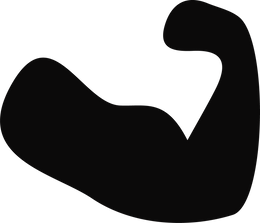 200.000+ Customers Worldwide
200.000+ Customers Worldwide Worldwide Tracked Shipping
Worldwide Tracked Shipping

